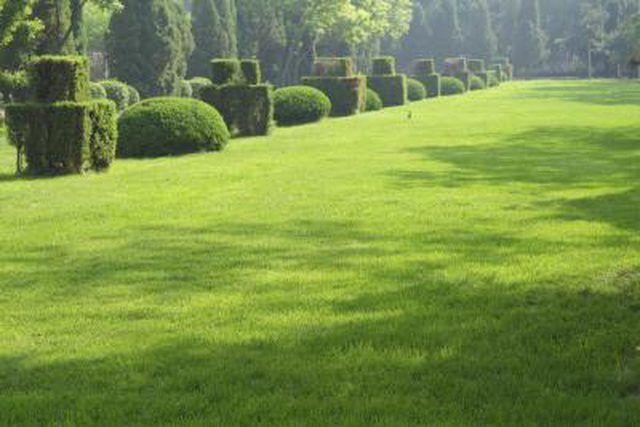Bulbs
Flower Basics
Flower Beds & Specialty Gardens
Flower Garden
Garden Furniture
Garden Gnomes
Garden Seeds
Garden Sheds
Garden Statues
Garden Tools & Supplies
Gardening Basics
Green & Organic
Groundcovers & Vines
Growing Annuals
Growing Basil
Growing Beans
Growing Berries
Growing Blueberries
Growing Cactus
Growing Corn
Growing Cotton
Growing Edibles
Growing Flowers
Growing Garlic
Growing Grapes
Growing Grass
Growing Herbs
Growing Jasmine
Growing Mint
Growing Mushrooms
Orchids
Growing Peanuts
Growing Perennials
Growing Plants
Growing Rosemary
Growing Roses
Growing Strawberries
Growing Sunflowers
Growing Thyme
Growing Tomatoes
Growing Tulips
Growing Vegetables
Herb Basics
Herb Garden
Indoor Growing
Landscaping Basics
Landscaping Patios
Landscaping Plants
Landscaping Shrubs
Landscaping Trees
Landscaping Walks & Pathways
Lawn Basics
Lawn Maintenance
Lawn Mowers
Lawn Ornaments
Lawn Planting
Lawn Tools
Outdoor Growing
Overall Landscape Planning
Pests, Weeds & Problems
Plant Basics
Rock Garden
Rose Garden
Shrubs
Soil
Specialty Gardens
Trees
Vegetable Garden
Yard Maintenance
How to Identify Lawn Insects
How to Identify Lawn Insects. You don’t have to apply insecticide at the first sign of crawling or flying creatures on your lawn. The insects could be pests, but they could also be helpful predators or decomposers or, perhaps, they are just passing through on their way to an entirely different habitat. Identifying the creatures on your lawn...

You donít have to apply insecticide at the first sign of crawling or flying creatures on your lawn. The insects could be pests, but they could also be helpful predators or decomposers or, perhaps, they are just passing through on their way to an entirely different habitat. Identifying the creatures on your lawn is the first step in determining whether or not you need to take action.
Root Feeders
Beetle larvae, known as grubs, feed on lawn roots, eventually separating the roots from the blades. Grubs of May and June beetles, along with those of chafers and Japanese beetles are common lawn pests. Dry, dead patches on your lawn could be a sign of grubs underneath. Raccoons, skunks and other small mammals dig holes in the lawn to eat the protein-rich grubs. Confirm a grub infestation by cutting a one-foot square patch in the sod along the border of damaged and healthy grass. Roll back the sod to check for light-colored, C-shaped insects with six legs behind a dark, hard head. If you find more than six grubs in a square-foot patch, treatment may be warranted.
Grub Treatment
Beneficial nematodes (Heterorhabditis bacteriophora) are microscopic roundworms that transmit a fatal disease to grubs. Packaged in a powder or on a sponge, nematodes are available online or in some garden centers. Place the sponge in a bucket with two quarts of water. Squeeze the sponge to extract the nematodes, then remove the sponge and pour the mixture into a watering can. Add an additional gallon of water to dilute the mixture then pour it over the lawn. Keep the lawn moist for the first week after application.
Chewing Insects
Common above-ground lawn pests include sod webworms, armyworms and cutworms. These caterpillars of various moth species chew on the blades at soil level. Sod webworms grow up to 3/4 inch long and are light brown with a dark head. Cutworms grow up to 1 1/2 inches long and range in color from brown to gray. Armyworms reach lengths up to 2 inches and are dull colored with lengthwise stripes. Parasitic wasps, ground beetles and birds are natural predators of these caterpillars. When natural predators canít keep up, apply Bacillus thuringiensis var. kurstaki. You can buy this natural soil bacterium at garden retailers. Mix 1 to 2 teaspoons of the bacterial concentrate into 1 gallon of water and spray the lawn during warm, dry conditions. Apply a second treatment after seven days. Protect your eyes and clothing during application.
Sap-Sucking Pests
Sap-sucking pests, particularly aphids, leafhoppers and chinch bugs, cause yellow patches on the lawn. Aphids are small, pear-shaped, yellow or green insects. Leafhoppers are tiny, green or grey insects. Both of these insects discharge a sugary substance called honeydew which attracts ants and fosters mold growth. Natural predators include ladybugs, lacewings and parasitic wasps and are usually enough to keep aphid and leafhopper pests in check. Chinch bugs are about 1/6 inch long with light-colored wings with an obvious black triangle near the wing edges. If you find more than 15 of these creatures in a one-square-foot area of your lawn, treat them with a pyrethrin insecticide. Shake the bottle well then spray directly onto the grass where chinch bugs are present. Avoid direct contact with skin, eyes and clothing.
Beneficial Insects
The familiar ladybug and the green aptly-named lacewing are helpful on the lawn, eating pest insects. Ground beetles, which also feed on pest insects, are typically shiny and dark colored with narrow heads and elongated bodies. Ants and spiders are further beneficial lawn predators. Many fly species feed on animal waste and other organic matter on the lawn helping with decomposition.